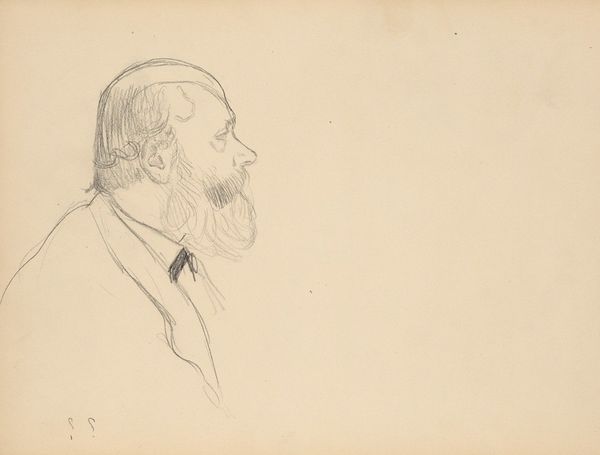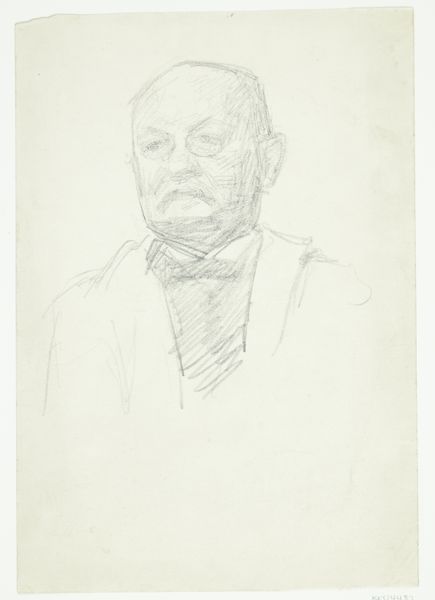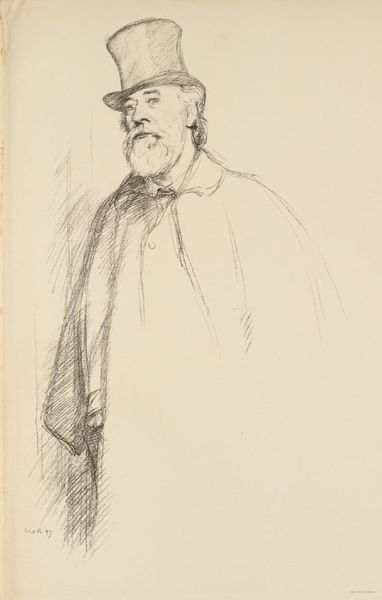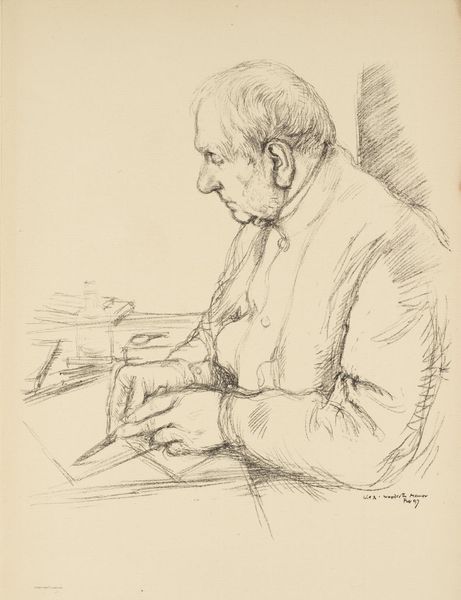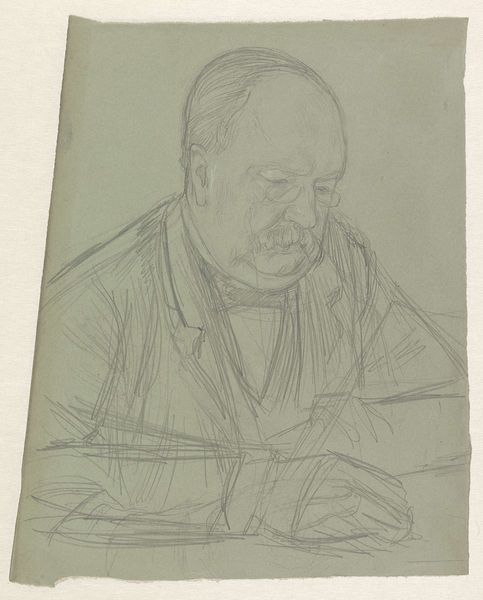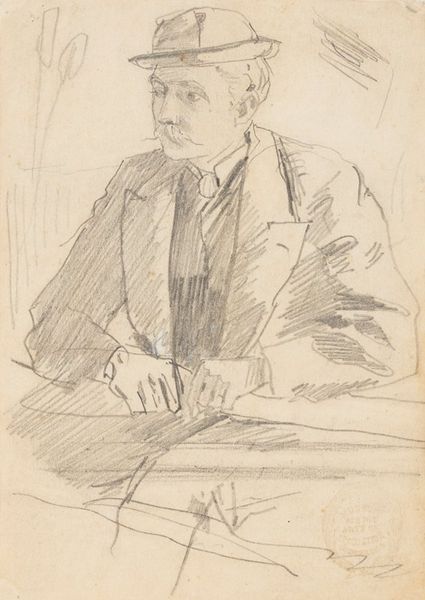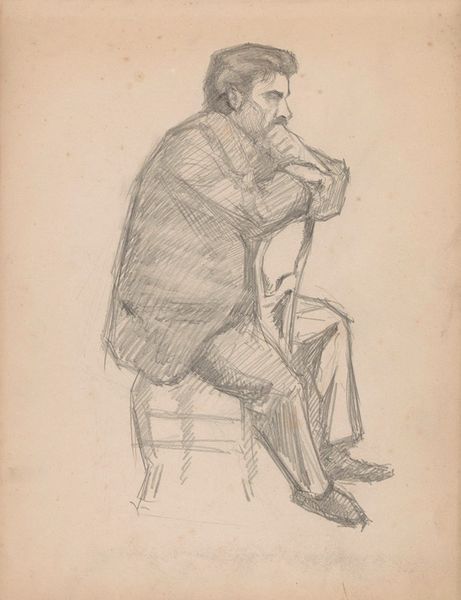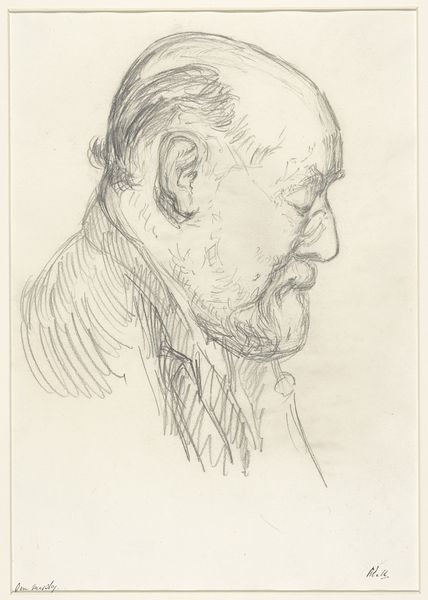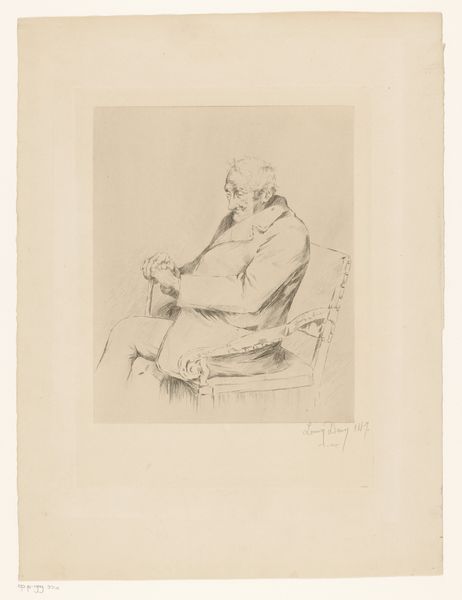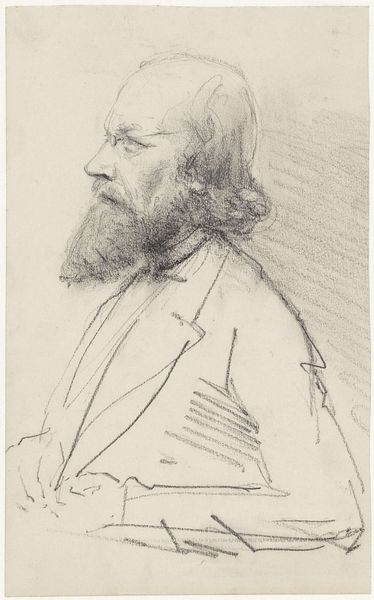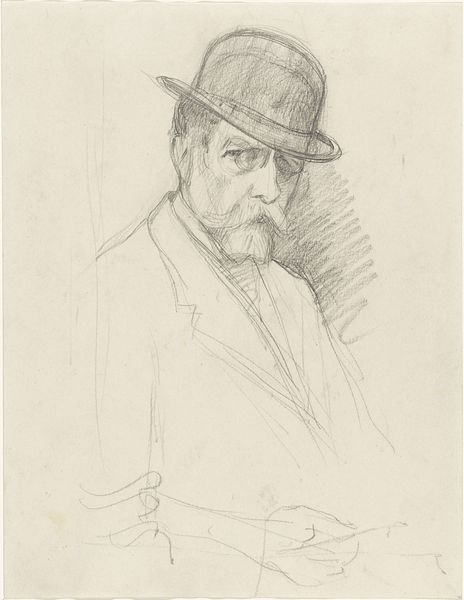
drawing, paper, dry-media, pencil
#
portrait
#
drawing
#
paper
#
dry-media
#
pencil drawing
#
pencil
#
portrait drawing
Copyright: Public Domain
Curator: Welcome! Before us hangs "Bildnis des Malers Jakob Wick," a compelling pencil drawing now residing in the Städel Museum's collection, attributed to Fritz Boehle. Editor: My first impression is one of gentle introspection. There's a quietness to the image, even though it’s rendered with such deliberate strokes. You can almost feel the weight of the man, physically and perhaps mentally. Curator: Precisely. Looking at the means of its production, Boehle's choice of dry media on paper reveals an immediacy and directness in capturing Wick. Notice the hatching and cross-hatching, especially around the face, building volume and depth with subtle variations of tone. We're able to view and study the production of an image of another artist! Editor: Agreed. This is more than a simple portrait. Think about the role of the artist in late 19th, early 20th century German society and what this drawing suggests. There's a power dynamic at play, isn't there? Boehle, as the artist, holds a certain level of control, framing Wick in a specific light. Considering the art world's patriarchal and often classist structures, how does that inform our interpretation of this representation? Curator: It certainly does. The act of drawing, and specifically with pencil, carries connotations of study, of preliminary work. Was this drawing intended for something larger? Is it practice, a form of tribute, a study in light and shadow? Editor: Perhaps it speaks to the community among artists—a reciprocal process of representing each other. And looking at his features, I wonder, who was Jakob Wick as an artist? What stories did he want to tell? What were his struggles and contributions in a world that historically prioritized certain narratives over others? How would his portrait be different were it not filtered through Boehle's artistic interpretation? Curator: Those are vital considerations. We're examining not just the final product, but the labour, the context in which this image came to be. Consider the value of materials, and who could afford them. This reveals details of class and status within the artistic community and their place within society. Editor: This portrait reminds us that artworks are never neutral objects; they are products of social forces. Recognizing those forces enables us to move beyond appreciating art simply for its aesthetic value. Curator: Indeed, examining the artwork allows us to think critically about who gets represented and how artistic labour has traditionally been valued, so let’s encourage others to do the same.
Comments
No comments
Be the first to comment and join the conversation on the ultimate creative platform.
